Esta acción conmemoró la masacre estudiantil perpetrada por el gobierno mexicano el 02 de octubre de 1968. Los y las artistas construyeron lo que llamaron “murales portátiles” o “murales efímeros”, que eran una especie de periódico mural integrado por fotografías, textos y gráfica, que informaban sobre el suceso que se recordaba. Estos murales se colocaron en el espacio público de la Plaza Santa Cecilia para que los transeúntes se detuvieran a conocer sobre “La noche de Tlatelolco”.
Gerardo Navarro construyó para la ocasión un tanque de guerra hecho de cartón. El cartón estaba montado sobre una estructura móvil, como de “carrito de elotes”, en donde Navarro se encontraba con una grabadora Ghetto Blaster —un reproductor portátil de cassettes de música— que reproducía sonidos de balazos y bombas. Al inicio, el tanque estaba estático en el centro de la plaza, lxs niñxs estaban fascinados. Al oscurecer se repartieron veladoras entre el público y se hizo una especie de vigilia para los muertos el 2 de octubre rodeando el tanque de cartón con las veladoras prendidas. De un momento a otro el tanque comenzó a moverse, lo que causó sorpresa entre niñxs y adultxs. En la culminación del evento el tanque fue destruido ahí mismo, al ritmo de la música en vivo, como acto simbólico contra la violencia militar del Estado.
En el evento participó la banda tijuanense de rock Mercado Negro y el actor Carlos Niebla animó las acciones con sus intervenciones como maestro de ceremonias.
Ephemeral Event/Performance/Murals: The Night of Tlatelolco 20th Anniversary of the Tlatelolco Massacre
This event commemorated the massacre of students by the Mexican government on October 2, 1968. The artists built what they called “portable murals” or “ephemeral murals,” which were a kind of mural newspaper composed of photographs, texts, and graphics that recounted the event being commemorated. These murals were placed in the public space of Plaza Santa Cecilia so that passersby could stop and learn about “the Night of Tlatelolco.”
Gerardo Navarro built a cardboard war tank for the occasion. The cardboard was mounted on a mobile structure, like a “carrito de elotes,” where Navarro stood with a Ghetto Blaster recorder—a portable music cassette player—that played the sounds of bullets and bombs. At first, the tank stood still in the center of the plaza, and the children were fascinated. As darkness fell, candles were distributed to the public, and a kind of vigil for the dead of October 2 was held, with the cardboard tank surrounded by lighted candles. From one moment to the next, the tank began to move, surprising children and adults alike. At the culmination of the event, the tank was destroyed on the spot, to the rhythm of live music, as a symbolic act against the military violence of the state.
The Tijuana rock band Mercado Negro participated in the event, and the actor Carlos Niebla animated the actions with his interventions as master of ceremonies.
02 de octubre, 1988
October 2nd, 1988
Plaza Santa Cecilia
Carmela Castrejón, María Eraña, Berta Jottar, Gerardo Navarro, José Hugo Sánchez, la banda musical/ rock band Mercado Negro y/ and Carlos Niebla como maestro de ceremonias.
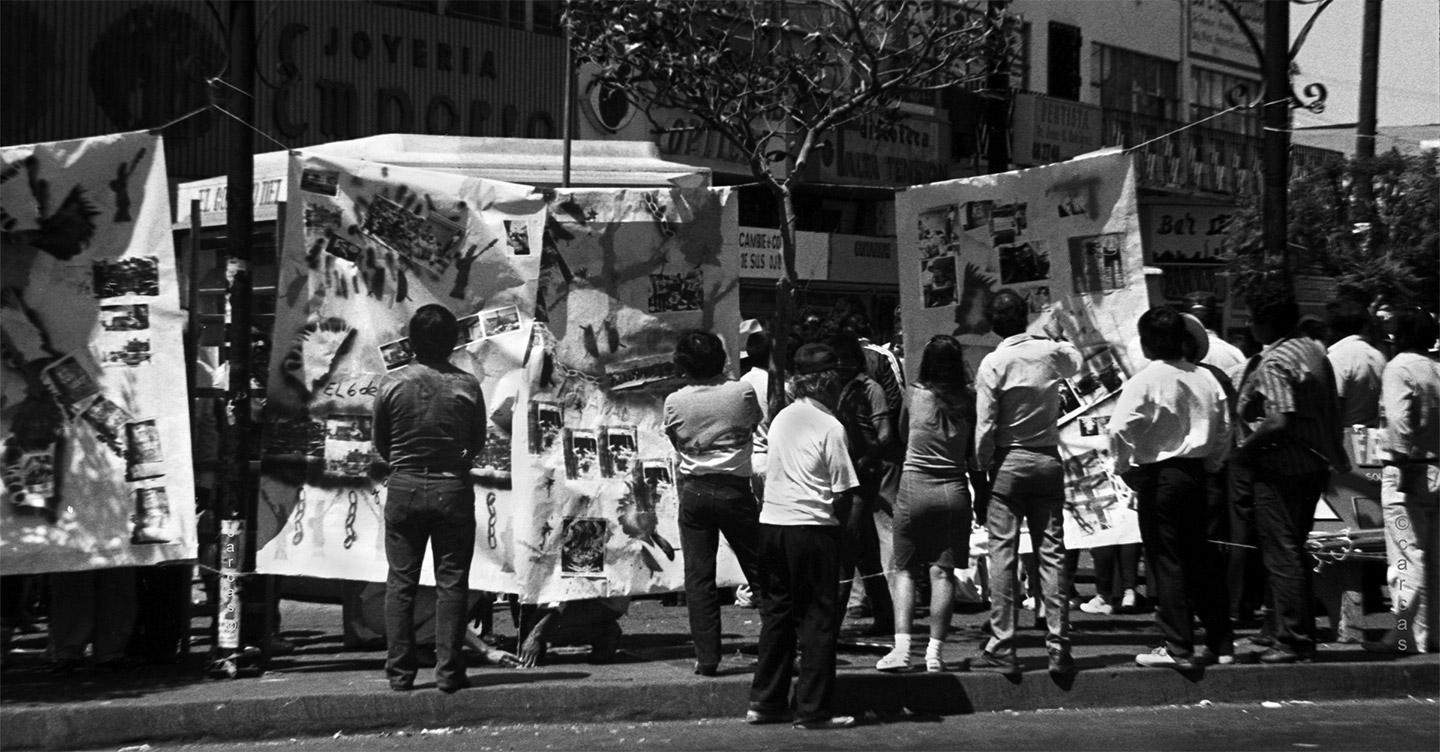
La noche de Tlatelolco/ The Night of Tlatelolco (1988), murales portátiles/ portable murals. Imagen de/ Image by Carmela Castrejón.
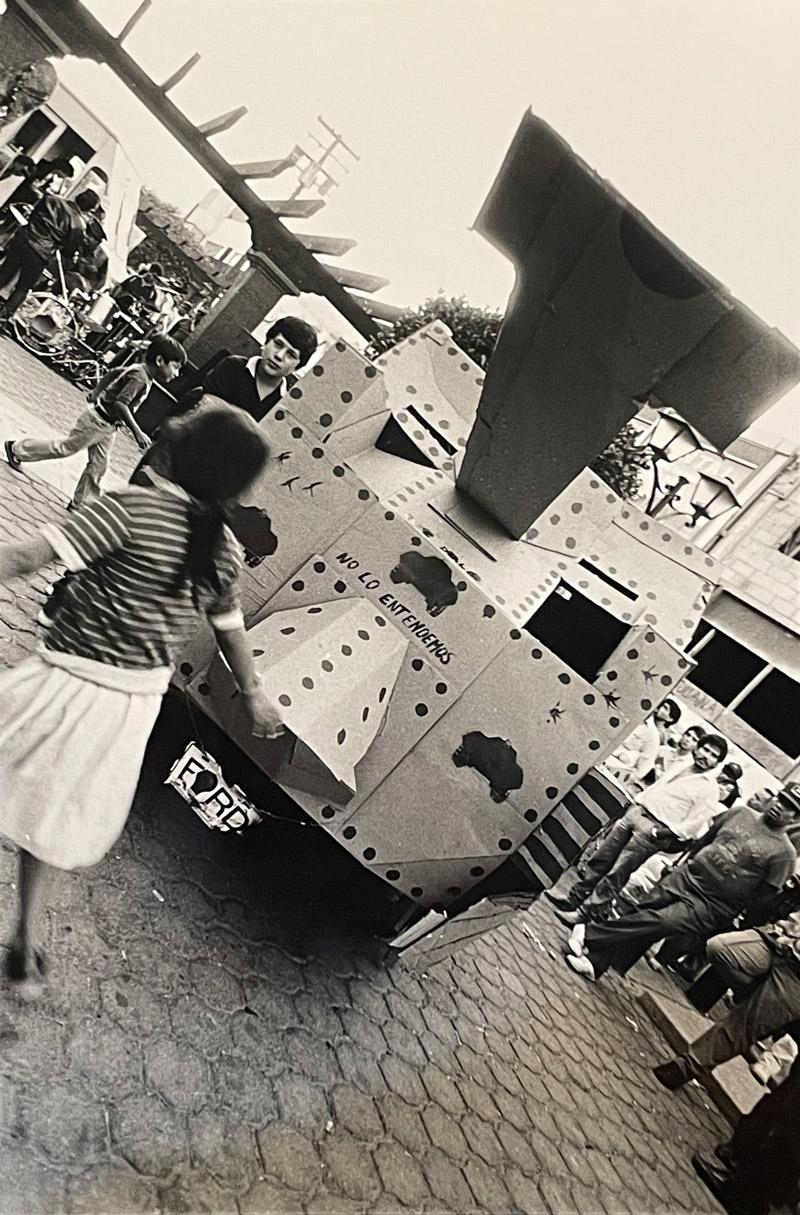
La noche de Tlatelolco/ The Night of Tlatelolco (1988). Imagen de/ Image by Berta Jottar.

La noche de Tlatelolco/ The Night of Tlatelolco (1988), Carlos Niebla entrevista a integrante de/ interviewing a member of Mercado Negro. Imagen de/ Image by Carmela Castrejón.
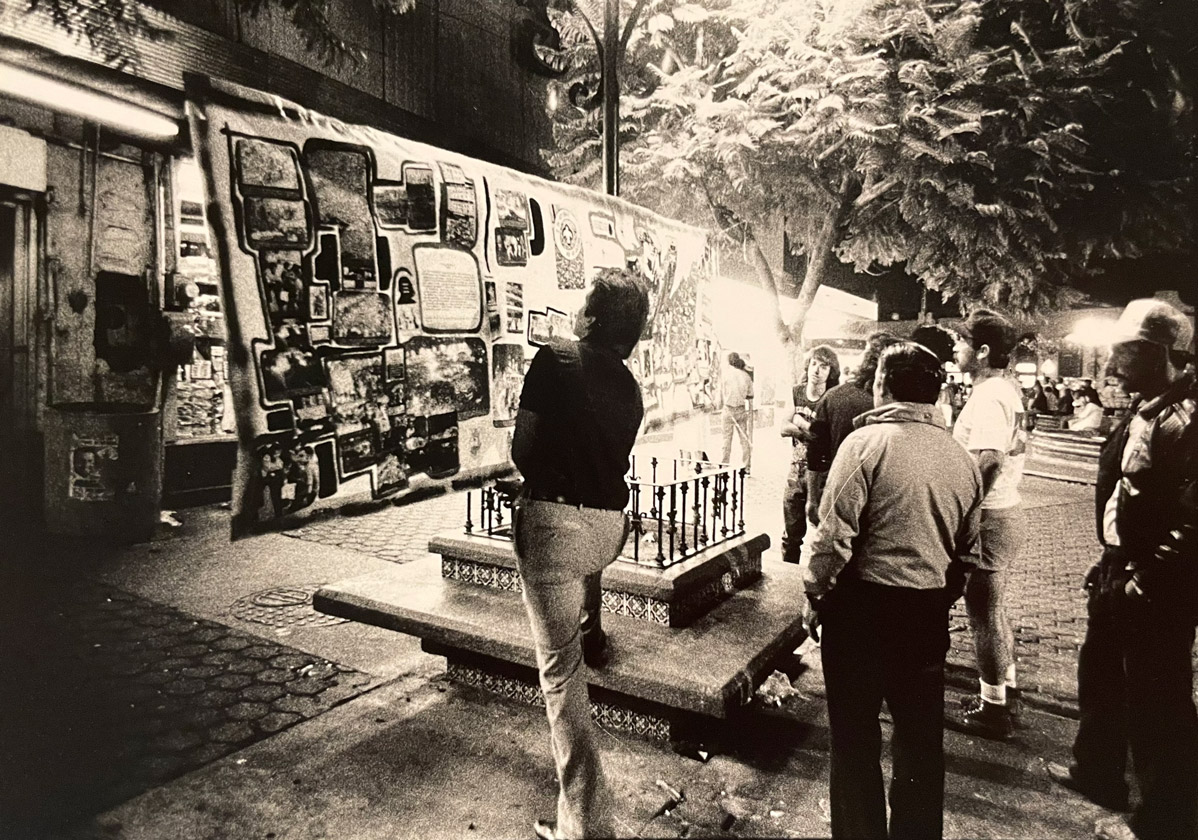
La noche de Tlatelolco/ The Night of Tlatelolco (1988). Imagen de/ Image by Berta Jottar.
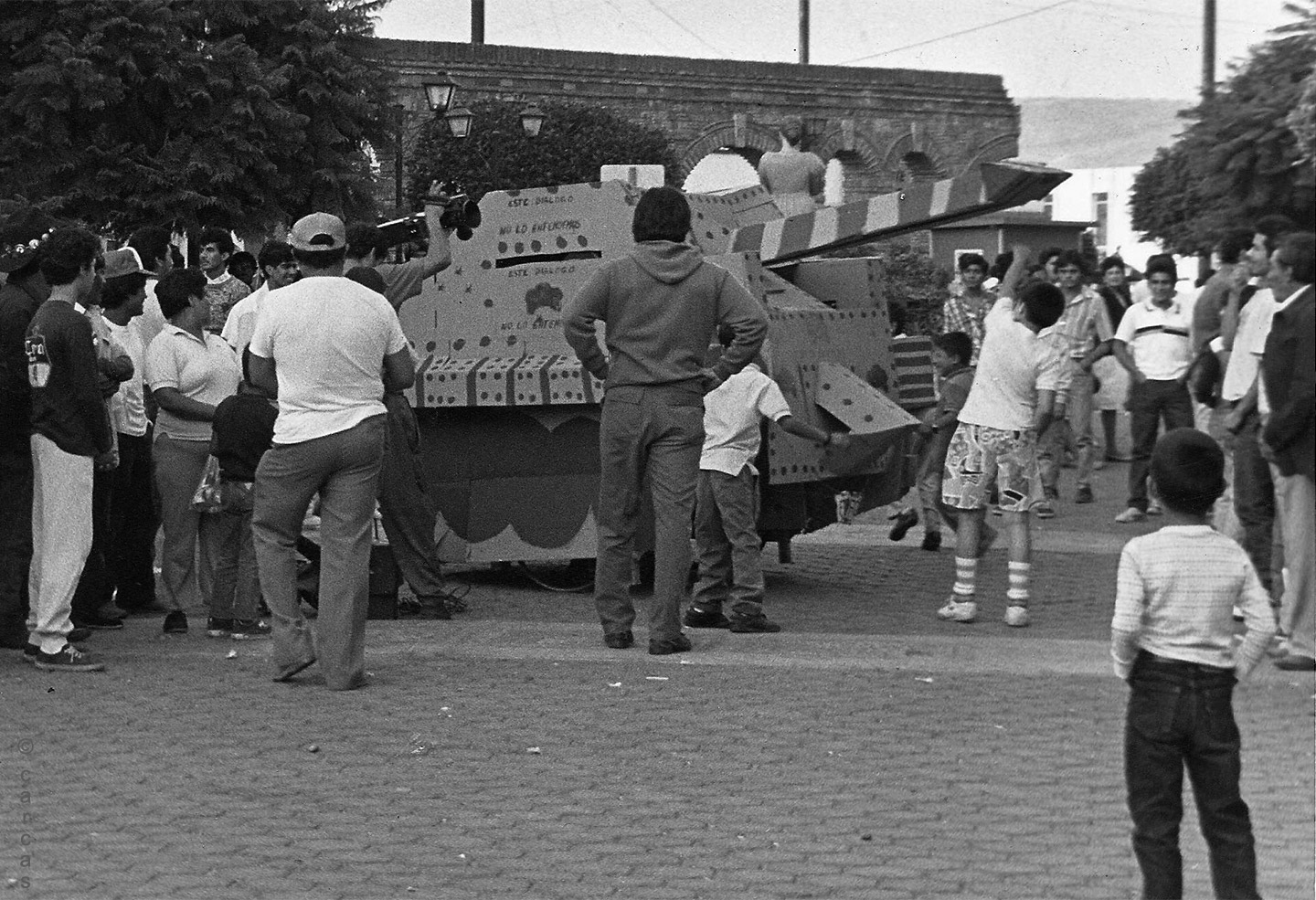
La noche de Tlatelolco/ The Night of Tlatelolco (1988). Imagen de/ Image by Carmela Castrejón.
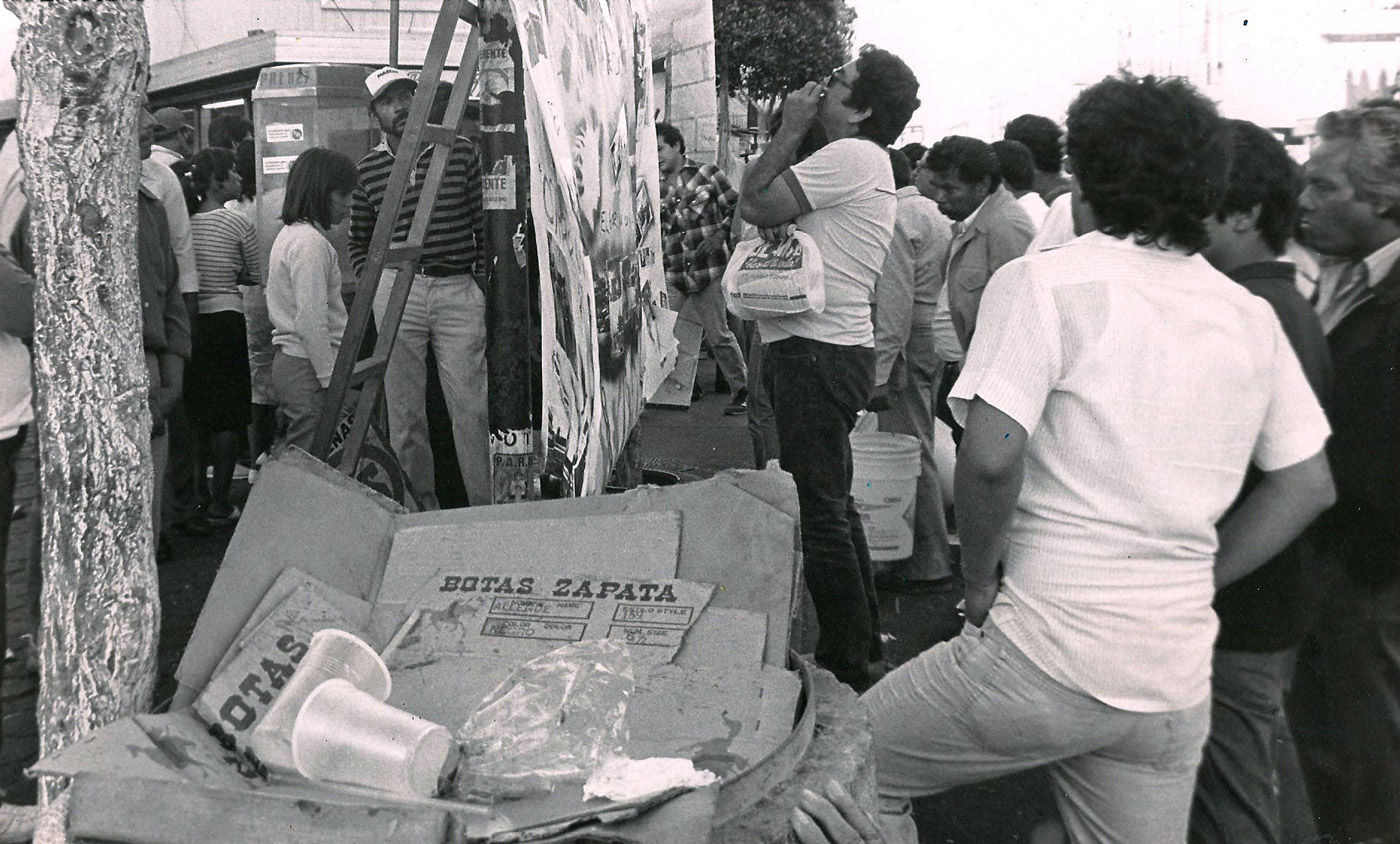
La noche de Tlatelolco/ The Night of Tlatelolco (1988). Imagen de/ Image by Carmela Castrejón.

La noche de Tlatelolco/ The Night of Tlatelolco (1988). Imagen de/ Image by Berta Jottar.